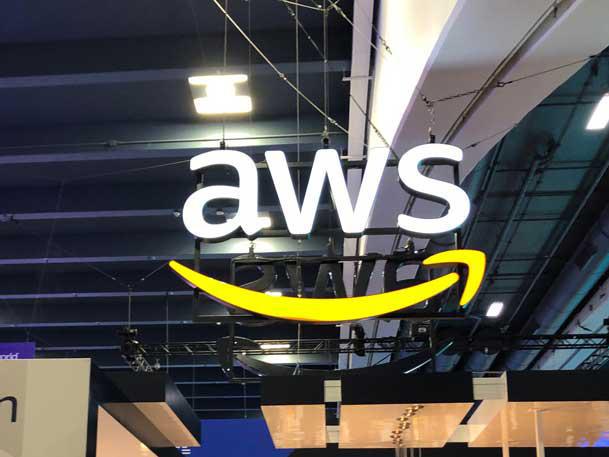RoR vs Node.Js: Featured Based Comparison

Ruby on Rails and Node.Js are the two most popular frameworks used in web development. Both are popular due to their simplicity yet so useful, development speed, and easy code maintenance. These two frameworks are often compared and they seem to be good alternatives to Python, PHP, Java, or .NET.
RoR is based on the Ruby language, whereas Node.Js represents JavaScript everywhere. Though Node.Js is based on only a single language, it has the capabilities to work on different languages for server-side or client-side scripts.
When RoR was first introduced, it got popular for its simple and readable English Syntax. The demand for RoR is declining over the past few years, but it recovers after its minor declines and maintains its popularity.
The scenario is different with NodeJS web developers India has been in demand ever since it got introduced and its demand is higher than RoR.
Let’s dive deep into the article “RoR vs Node.Js: Featured based comparison”.
Performance and Speed Comparison
Ruby on Rails
Ruby on Rails (RoR) is a framework that works at the server site. Basically, it is a model-view-controller (MVC) framework. As it is an object-oriented interpreted programming language, it slows down its functions under specific circumstances.
In most cases, RoR has the capabilities to create efficient web applications with satisfactory performance. The only factor to remember is to ensure adherence to the development standards so that further tasks run smoothly.
Node.js
Node.Js acquires the non-blocking and asynchronous JavaScript, it creates an excellent runtime environment for small tasks/operations that don’t affect the major application thread. As Node.Js is compiled on version 8 of the Chrome JavaScript engine, multitasking becomes easier and it functions all the tasks at the same time at a lightning speed.
Node.Js is able to access many requests simultaneously giving much faster experiences to the programmers. This is the reason why the tech giants are moving towards Node.Js for its speed performance. Some of the well-known companies that use Node.Js are PayPal, Uber, LinkedIn, eBay, Medium, etc. Doesn’t the user volume say something?
Application architecture
While choosing a framework for your application, it is important to check its flexibility first. Frameworks are always needed to be treated as a guide, not methods or standards. Let’s check Ruby on Rails and Node.Js in terms of architecture.
Ruby on Rails
Ruby on Rails follows MVC (Model View Controllers) architecture. It is highly used for the development of web-based applications. To get the apps to respond to a query, you need to define a view, controller, and route. The view takes care of the app’s front end, whereas the controller looks after the application flow.
Getting started with the RoR framework is time-consuming, but the final result is satisfactory. The code gets well-organized and easy to read, maintain, and edit.
Node.js
Node.Js has the ability to handle multiple concurrent requests with high performance in a real-time environment. It also lets you use the MVC/MVP architecture pattern, which eases boarding and implementing issues in the application codebase. With Node.Js, you can view multiple views for the same data and support synchronization between various data.
Scalability
Frameworks undoubtedly influence web application scalability, that’s why choosing the right framework is very important. Here, let’s find out how RoR and Node.js stand out in terms of scalability.
Ruby on Rails
RoR’s scalability is not as large as compared to other frameworks. It can easily scale well if you have a moderate number of users that operate on a similar number of objects. A lot of questions were raised on RoR’s scalability when Twitter switched to another framework.
Node.js
Node.Js framework allows the development of highly scalable applications. The non-blocking I/O and event-driven model can perform multiple requests, where you can develop data-centric and real-time apps. It can handle high-power scalable applications and thousands of concurrent requests without slowing down the platform.
Ease of testing
Frameworks enable you to work without any glitch, high load, and growing market demands. Your application testing needs to go with ease with every process like UI standards, usability, and compatibility. Let us find whose framework gives you smooth testing, RoR or Node.Js.
Ruby on Rails
Testing is inherently woven into Ruby on Rails, which simplifies it and is compelling to direct inside the framework. As developers make models and controllers, RoR naturally begins creating skeleton test code. This prompts an impressive legwork decrease. Moreover, its emphasis on bet development practices also decreases complexities during the testing stage.
Node.js
Node.Js offers various tools from unit testing to debugging testing with a rich ecosystem of third-party packages. Some of the testing tools are Mocha, Jest, Jasmine, Lab & Code, and AVA which creates a sound testing environment for Node.Js apps. Those tools offer different global functions such as setup, describe, specify, edit, cut, etc.
Micro Services Compatibility
Ruby on Rails
Ruby on Rails, for the most part, inclines towards monolithic architecture but that doesn’t mean it can’t be utilized in a microservices design. Monolithic architecture is the easiest architecture to implement in applications.
RoR can easily work with both monolithic architecture and microservices architecture as per the needs and deployments of the project.
Node.js
Both Node.js and microservices build smaller parts of code and services modules. Node.js is suitable for developing scalable apps as it efficiently handles multiple concurrent requests. Therefore, this duo makes an absolute combination for building organization-grade complex applications with higher scalability.
Database support
Ruby on Rails
RoR comes with built-in features that support SQLite, which is a lightweight database content management system. RoR also supports many other database systems from which you can select which depends on your project, those are MySQL, Microsoft SQL Server, Oracle, Open Base, and PostgreSQL.
RoR’s database is SQLite, which is set by default. Further, you can change your database according to your project needs.
Node.js
Node.Js database is huge and it can support all kinds of databases like a relational and NoSQL database. Though NoSQL databases like MongoDB are the best fit for the Node.Js framework.
If you have to choose one database then you can go for “mongoose” to maintain a relationship with data. Mongoose credibility goes to Node.Js, as it is totally built-in to it and MongoDB. It boosts productivity by increasing readability, maintaining code flexibility, and compatibility among other data.
Conclusion
No doubt RoR vs Node.Js is a difficult debate to conclude. This is the reason why we are stuck in between both frameworks. So let’s conclude this with which framework is most relevant.
Choose Ruby on Rails if you want to develop
- Stock exchange platforms
- Web applications, services, and pages with huge traffic
- Want to deploy and readily build MVP at a cost-effective price
- Develop SaaS application with the help of APIs and automation
- An e-commerce application with multiple sophisticated options
- Informational applications that can store, manage, and deliver tons of information to the visitors
You can Choose Node.js if you want to develop
- A single-page application
- Browser-based game applications
- Real-time multi-user web applications
- A web application to stream content
- Web Applications enriched with the effective capacity of data processing
So it all depends upon your next project which framework will be the best option. Before finalizing your final decision, just go through the article “RoR vs Node.Js: Featured based comparison”.
Read more related this





